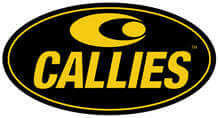
MS Access As A Dev Tool
Access continues to be a highly efficient tool for business database development.
The Best Microsoft Access Database Solutions owner, consultant, and principal programmer is Alison Balter - a recognized expert Microsoft Access consultant. Alison is the author of 15 Microsoft Access training books and 200+ training videos. She is a frequent guest speaker at MS Access conferences and has developed hundreds of applications for businesses of all types.
We know your business data is important; we listen to your concerns, ask questions, and gather information from all stake holders. We discuss your needs and requirements for your database. We find out what you want, why you need various features so we can obtain as much information as possible. Once we have the information we need, we work with you to design the proper database architecture, plus the dashboards, the questions (queries), forms, and reports you need for an excellent database system.

We also create websites designed for speed to display your data accurately, using ASP.NET technology. Fast, secure, and robust, our ASP.NET web sites and web applications give you true business tool for finding and displaying information dynamically on the web.






Access continues to be a highly efficient tool for business database development.

How to create a Microsoft Access application with some unique tips and tricks.

Your Access developer near me has some great info for you about using Access efficiently.
Call MS Access Solutions at (323) 285-0939 For Complimentary Consultation
The History of Relational Database Design
Dr. E. F. Codd first introduced formal relational database design in 1969 while he was at IBM. Relational theory, which is based on set theory, applies to both databases and database applications. Codd developed 12 rules that determine how well an application and its data adhere to the relational model. Since Codd first conceived these 12 rules, the number of rules has expanded into the hundreds. (Don't worry; you need to learn only a few of them!)You should be happy to learn that, although not perfect as an application development environment, Microsoft Access measures up quite well as a relational database system.
Goals of Relational Database Design
The number one goal of relational database design is to, as closely as possible, develop a database that models some real-world system. This involves breaking the real-world system into tables and fields and determining how the tables relate to each other. Although on the surface this task might appear to be trivial, it can be an extremely cumbersome process to translate a real-world system into tables and fields.A properly designed database has many benefits. The processes of adding, editing, deleting, and retrieving table data are greatly facilitated by a properly designed database. In addition, reports are easier to build. Most importantly, the database becomes easy to modify and maintain.
Rules of Relational Database Design
To adhere to the relational model, tables must follow certain rules. These rules determine what is stored in tables and how the tables are related.The Rules of Tables
Each table in a system must store data about a single entity. An entity usually represents a real-life object or event. Examples of objects are customers, employees, and inventory items. Examples of events include orders, appointments, and doctor visits.The Rules of Uniqueness and Keys
Tables are composed of rows and columns. To adhere to the relational model, each table must contain a unique identifier. Without a unique identifier, it becomes programmatically impossible to uniquely address a row. You guarantee uniqueness in a table by designating a primary key, which is a single column or a set of columns that uniquely identifies a row in a table.Access programmer cities we serve: Access Programmers Stockton California

